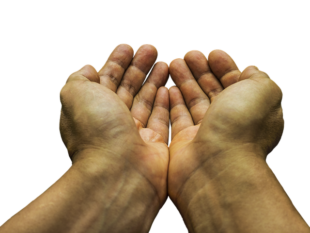Anxiety Attacks: What Are They and How to Manage Them
Christian Counselor Spokane
Think of a truly life-threatening situation – perhaps a child walking in an alley with his parents who are confronted by a dangerous criminal. Assuming the child understands what’s happening, he would immediately feel the physical sensations of terror – sweaty palms, difficulty breathing, or a wild heartbeat. He may feel tingly all over and nauseous. The child in this scenario would feel this way for good reason. The threat is real.
Now imagine yourself feeling all the same physical sensations, only you’re standing in your local grocery store by the produce section. You can smell the pineapple and you’re surrounded by fragrant and colorful fruit. Cheerful music is playing and everyone around you is in a pleasant, unhurried mood. There’s no danger that you can tell, yet all the feelings associated with being held at gunpoint are present.
 Anxiety attacks (also known as panic attacks) are unexplained feelings of doom that come out of nowhere. They are overwhelming mentally and physically and can feel like drowning, smothering, or choking. We call them “attacks” because the onset is sudden, they escalate quickly, and are completely overwhelming.
Anxiety attacks (also known as panic attacks) are unexplained feelings of doom that come out of nowhere. They are overwhelming mentally and physically and can feel like drowning, smothering, or choking. We call them “attacks” because the onset is sudden, they escalate quickly, and are completely overwhelming.We all feel anxiety from time to time, such as when we are faced with taking a test or speaking in public at a wedding, for example. Such events cause nervousness and dread in most people, but they are common experiences that are easy to understand.
Good public speakers and test takers learn to use anxiety to bring energy to their presentations, like artists and actors who use sadness or anger to enhance their craft. Learning to use difficult emotions this way is like mixing vinegar into salad dressing. But an anxiety attack is a flooding experience that sparks the fight or flight response in the body. So far from adding a little taste to a salad, they are like having vinegar forced up the nose, down the throat, and sprayed in both eyes wide open – just ask anyone who’s ever had one.
 Anxiety, unlike fear, is a reaction that is not logical. When a bear chases us through the woods, our body cues make perfect sense. Every part of us – mind, body, and soul – screams RUN! Breathing is an afterthought. Once we’re clear of danger, the thinking part of the brain kicks in to assure us we are safe, and our bodies relax – just so long as another bear doesn’t come lurching into view.
Anxiety, unlike fear, is a reaction that is not logical. When a bear chases us through the woods, our body cues make perfect sense. Every part of us – mind, body, and soul – screams RUN! Breathing is an afterthought. Once we’re clear of danger, the thinking part of the brain kicks in to assure us we are safe, and our bodies relax – just so long as another bear doesn’t come lurching into view.
Gradually our heart rate, breathing, and hormone levels catch up with our calming thoughts, and we’re back to normal. Fight and flight become rest and digest and all is well with the world. But when all of this happens and there seems to be no reason for it, it can feel like we’re going crazy.
Physical symptoms of panic attacks can be so overwhelming we can be tricked into thinking we’re having a heart attack or some other catastrophic physical event. Fast and furious fight or flight body cues make it difficult to tell the difference, and paramedics respond to medical calls for anxiety attacks all the time.
Individuals call 9-1-1 thinking they need an ambulance, only to have first responders direct them to mental health services or to their support system for help. If the attack is particularly distressing, a patient might be taken to the hospital for sedation, but that is just to help them recover from the immediate discomfort.
Treatment for Anxiety Attacks
Panic attacks are described as “the worst experience ever,” “terrifying,” “horrible,” or “like dying.” But as horrible as anxiety attacks can be, they are extremely treatable. Treatment can range between a few months to a year depending on how many different anxiety disorders one suffers from or if there are co-occuring issues like addiction or other disorders. Regardless, therapy alone, medication, or some mix of the two, have proven to be very effective in treating anxiety symptoms regardless of how long they’ve gone on.
Symptoms of Anxiety Attacks
Anxiety disorders range anywhere between general anxiety – having a chronic but mild level of worry – to full on attacks that cause wild surges of adrenaline and cortisol.
For an experience to qualify as a clinically significant anxiety attack, it must involve at least four of the following symptoms:
- sudden onset
- overwhelming fear
- palpitations
- sweating
- trembling
- shortness of breath
- a sense of choking
- chest pain
- nausea
- dizziness
- feeling detached from the world
- fear of dying or doom
- numbness or tingling
- chills or hot flashes
What to Do about Anxiety Attacks
When we experience anxiety symptoms and attacks, it’s a good idea to get a medical checkup. Doctors can rule out medical conditions – such as thyroid problems, hypoglycemia, or asthma – that can manifest like anxiety but are actually physical in nature. Since certain drugs and supplements can cause anxiety, a doctor can evaluate prescriptions to see if there are better options available.
Once a medical cause is ruled out, next steps can be taken. Following a regiment to address general anxiety is the first step in addressing attacks after medical causes are ruled out. While general anxiety may seem quite different than anxiety attacks, it is part of the overall problem. Reducing general anxiety helps prevent attacks and reduces their severity. Making lifestyle changes, growing a better support system, and building coping skills are all things to consider.
Changes like striking a work/home balance and improving lifestyle are proven solutions for anxiety. Addressing sleep and diet issues alone can really help. It isn’t uncommon for people to regain a sense of control over symptoms by simply reducing caffeine intake or getting more hours of sleep. Other proven solutions include exercise and reducing alcohol and cigarettes. Making changes like these first can save a lot of time and expense.
Staying connected to other people is another thing to be aware of. Anxiety attacks are so miserable we develop a crippling fear of simply having one in the first place – a kind of fear of fear itself. Anxiety attacks lead to withdrawal, and we avoid people and places that we usually enjoy. This withdrawal and avoidance leads to isolation and alienating others who care. Supportive people can ground and safeguard us from flights of anxiety, just as loneliness and disconnection aggravate symptoms of anxiety. With a little education, loved ones can come to understand attacks and help us stay engaged.
Self-help remedies for anxiety are abundant. There are many resources on the subject. Good books to read include: The Anxiety and Worry Workbook (by David A. Clark, PHD and Aaron T. Beck, MD,) Getting Past Your Past (by Francine Shapiro, PHD), and Calming the Brain through Mindfulness and Christian Meditation (by Mark Beishchel).
Strategies can be learned and practiced regularly, like contemplative prayer and meditation, progressive muscle relaxation, and deep breathing. Simple tools like scheduling time to worry, inducing worry when it’s convenient, and repeating calm phrases to ourselves are all practical, easy, and fast ways to regain control.
If we cannot manage anxiety symptoms on our own, it’s time for professional help. Most experienced therapists are well-trained in addressing and treating anxiety because disorders are extremely common. A therapist can help determine the causes of anxiety and help devise a course of treatment that will bring relief as quickly as possible. Anxiety disorders respond very well to talk therapy and some resolve quickly with no other form of treatment.
What to Do During a Panic Attack
1) Don’t resist
The fear of the attack itself and the need to fight the attack only compounds the experience. Giving yourself permission to have the attack is a very fast way to regain some control. Self-talk like, “these attacks come and go,” “I’ve done this before and survived,” and “I know what’s happening” can really help add calm to the already dreadful experience.
2) Move
 When having an anxiety attack, it helps to do something physical, like standing up and running in place. When we move, we trick our bodies into thinking we’ve engaged in fight or flight. In conjunction with calm, rational, self-talk, we can get our brains to stop signaling the body for action, and relax.
When having an anxiety attack, it helps to do something physical, like standing up and running in place. When we move, we trick our bodies into thinking we’ve engaged in fight or flight. In conjunction with calm, rational, self-talk, we can get our brains to stop signaling the body for action, and relax.
3) Breathe
Difficulty breathing and holding the breath are two common responses to panic attacks. They limit or flood oxygen to the brain in a manner that is not helpful or calming. To get the prefrontal cortex, or the logical brain, to start talking and helping the calming down process, oxygen is needed.
Since breathing is voluntary, it is something we can control as well. It’s important to manage “some” breathing if possible, gaining more and more mastery gradually during an attack. Getting a good breath in, even just once or twice during an attack, is good enough to make a difference.
4) Reduce stimuli
Attacks are already overwhelming, so reducing our exposure to things that are stimulating, strong smells, sights, and temperatures, can be a good idea. These sensations can accelerate the experience of an attack. Closing eyes or getting into a quiet, maybe dim or dark room can help reduce the power of the experience.
5) Increase stimuli
Stimuli can be helpful, too. Smells that calm, like lavender oil, or Frankincense – both available for purchase in stores or online – can be grounding, offering a distraction from the dread. Whether it’s a smell, a sound, or the feeling of the breeze, it’s important the stimuli is under our control.
Something as simple as taking a drink or feeling water from a faucet you can turn on and off or make hot or cold, can help counter feelings of powerlessness that accompany anxiety attacks.
6) Get grounded
Since attacks lead to feelings of detachment or not being real, it’s easy to remind yourself that you’re still in the room. Focusing on things around you, the pattern of the wallpaper, the smooth feeling of the floor, or the experience of washing your hands can help.
 Physical sensations like the cold earth on bare feet or fabric on fingertips reduce the sensation of disappearing when you focus on them. Accompanied with thoughts like, “See, you’re still here, and the water is warm,” can bring you back to earth.
Physical sensations like the cold earth on bare feet or fabric on fingertips reduce the sensation of disappearing when you focus on them. Accompanied with thoughts like, “See, you’re still here, and the water is warm,” can bring you back to earth.
7) Progressive muscle relaxation techniques
Part of having an attack is the involuntary tensing of the muscles in our bodies. Squeezing your fists, counting, and then releasing, is another way of having control. Tensing muscle groups and then letting them go is a way of telling the body we’re doing something. Like exercise, tensing and releasing muscles provides an outlet for body cues.
The good news is that there is no shortage of information and help for anxiety and anxiety attacks. Anxiety makes us feel on edge, and attacks overwhelm and come on suddenly and without obvious provocation. Severe attacks lead to isolation and avoidance and can alter our lives. But unlike some other disorders, anxiety is easily treated at home or with the help of a professional.
“Fog,” courtesy of cocoparisienne, pixabay.com, CC0 License; “Scary,” courtesy of maraisea, pixabay.com, CC0 License; “Run,” courtesy of ambroo, pixabay.com, CC0 License; “Empty hands,” courtesy of maxlkt, pixabay.com, CC0 License





